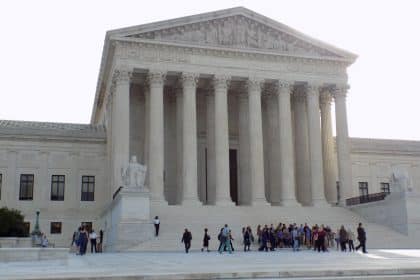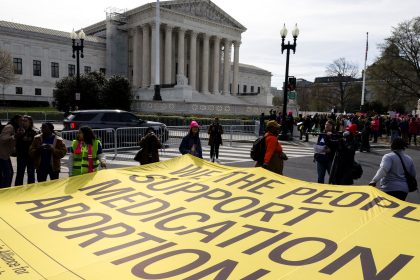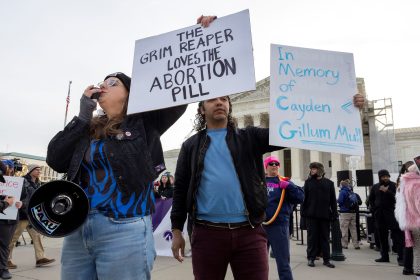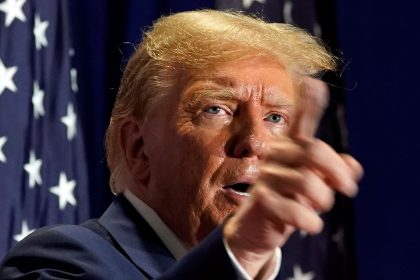A Justice’s Love of Prince, ‘The Lord of the Rings’ All Figure in High Court Arguments Over Patent Case
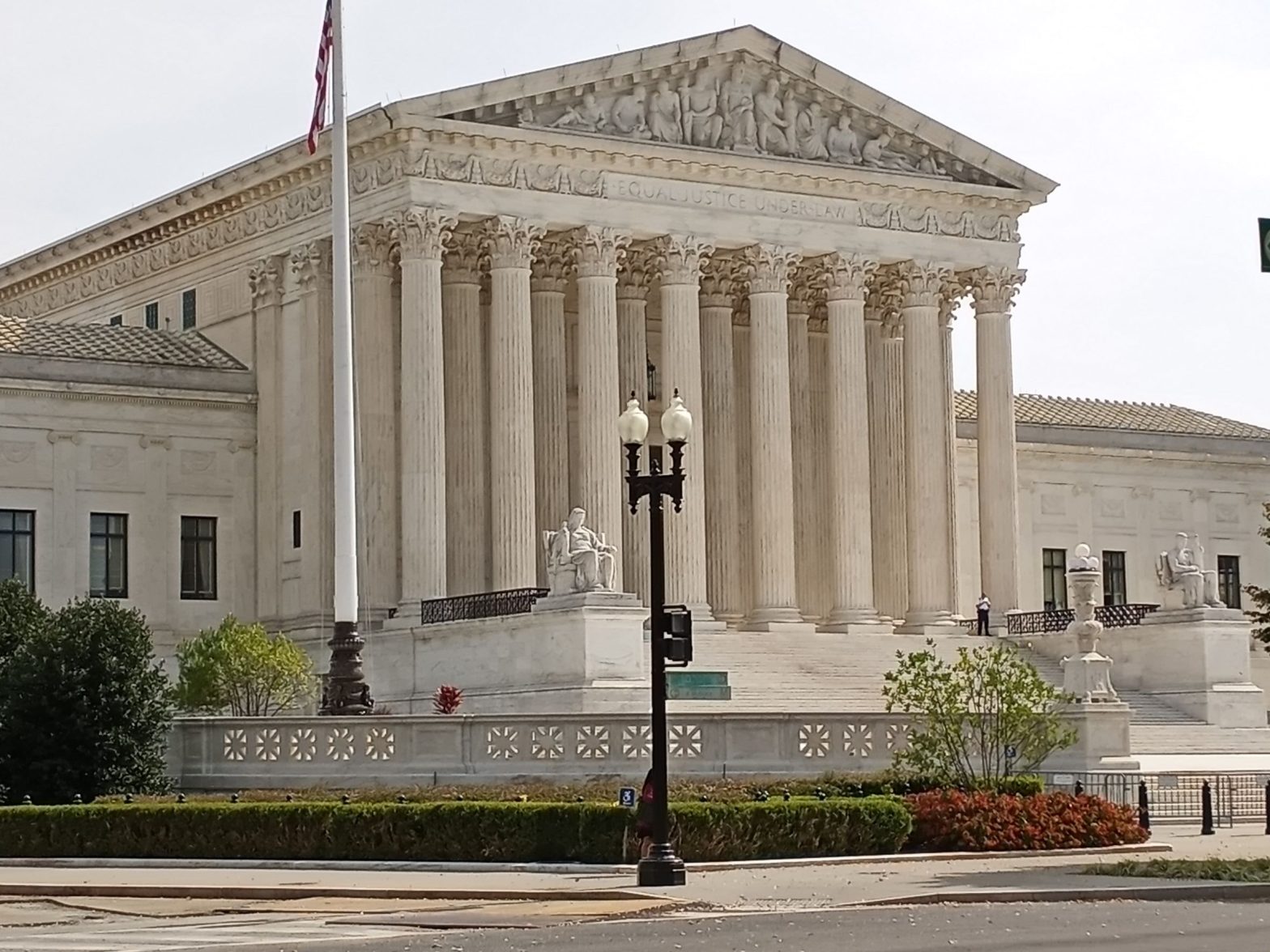
WASHINGTON — A high stakes copyright battle over images Andy Warhol made from a photograph nearly four decades ago inspired a spirited and sometimes hilarious debate at the Supreme Court Wednesday that touched on everything from “Mork and Mindy” and “Lord of the Rings” to Justice Clarence Thomas’ admission that he’s a Prince fan.
The case before the court involved photographer Lynn Goldsmith’s claim that Warhol violated her copyright by basing a series of 16 images he created on a portrait she took of Prince in 1981, just as the musician was gaining worldwide acclaims for songs like “Little Red Corvette,” “Delirious” and “When You Were Mine.”
The outcome of the case could dramatically alter the fair-use provision of copyright law as it relates to so-called “follow-on” or derivative works, impacting not just photography and graphic arts, but also the worlds of music, television, videos and books.
Seeking to underscore the breadth of a potential ruling in Goldsmith’s favor, Roman Martinez, arguing on behalf of the Andy Warhol Foundation for the Visual Arts, said it could strip protections for scores of works of modern and contemporary art, preventing museums from displaying or even owning such works.
In fact, a number of justices raised the point that when the Warhol Foundation allowed Vanity Fair magazine to use one of the images with a Prince tribute article after the musician’s death in April 2016, it was effectively competing against Goldsmith in the marketplace with something that was essentially her own work, somewhat modified.
In such instances, Martinez disagreed with their artistic assessment, arguing that Warhol had “undeniably transformed the photograph in both meaning and messages.”
But Chief Justice John Roberts wondered how low the bar should be set when considering when an original work is transformed into something else.
“Let’s suppose you photoshopped an image of Prince and put a smile on his face — the intent being to convey a new message, ‘Prince is happy.’ Would that be enough of a transformation to constitute a new work of art?” he asked. “Because if it was, there would be nothing left for the creator of the original work.”
Other justices appeared to worry that the 2nd U.S. Circuit Court of Appeals had gone too far in its ruling in Goldsmith’s favor, essentially wiping out an entire level of analysis in such cases.
As they probed to reach a consensus, the justices invoked everything from the “Mona Lisa” to “The Lord of the Rings,” to the rap band 2 Live Crew, which was at the center of an earlier copyright case before the court, Campbell v. Acuff-Rose Music, Inc.
In that case a unanimous court held the more transformative a new work is of the original, the more likely that it will be deemed a fair use and thus not infringing.
But that ruling didn’t appear to be helping the justices sort out the current controversy.
At one point Justice Samuel Alito Jr. told Martinez that he made the issues at hand “seem so simple … but maybe they’re not so simple.”
After all, he continued, it’s no easy matter “to determine what is the meaning or the message of … a work of art.”
“There can be a lot of dispute about what the meaning or the message is. Some people would say it’s not necessarily the meaning or the message that the artist had in mind,” Alito said.
“If you called Andy Warhol as a witness, I don’t know what he would say the purpose or the message or meaning of his creation is?”
“I wish I could answer that question. He’s not with us, as you know, you honor,” Martinez said.
“I know that,” Alito said.
Warhol died in 1987.
But it was Justice Thomas who brought the house down when he revealed he was once a Prince fan “in the 1980s.”
“No longer?” Justice Elena Kagan asked.
“Well,” Thomas said, pausing as laughter rolled over the courtroom. “Only on Thursday night.”
But Thomas wasn’t ready to yield center stage.
Noting that the Warhol Prince work in question is tinted orange, he said to Martinez, ““Let’s say that I’m also a Syracuse fan and I decide to make one of those big blowup posters of Orange Prince and change the colors a little bit around the edges and put “Go Orange” underneath. … Would you sue me?” Thomas asked.
Martinez hesitated.
” … for infringement?” Thomas said, trying to help.
Martinez sought clarification.
“Would the Warhol foundation sue you if you were to do that?”
“Well, you’re their lawyer, so … ” said Thomas.
“I can’t comment on whether we would sue you,” Martinez said. “But I think, the question of whether that would be fair use … it sounds like you’re, by hypothesis, asking me to consider whether there’s a different meaning or message associated with the work. [But] That’s only part of the inquiry.
“The ultimate goal here is to figure out whether the follow-on user is doing something sort of creative that matters,” Martinez said.
“Oh, I’m just waving it during the game with a big Prince face on it, Go Orange,” Thomas said.
“In a circumsance like that I’d say it was very unlikely anyone would sue you,” Martinez said, seemingly relieved the line of questioning was over.
But Thomas hadn’t made his point yet.
“Oh, no, no,” the Justice said. “I’m going to market it to all my Syracuse buddies.”
“In that case … a court woud … quite reasonably look at that and said this is not the kind of creativity promoting use the law was meant to promote,” Martinez said.
“So, in other words, you would sue me?” Thomas said, inspiring laughter from the spectators.
“I would not sue … [but] =I think that you would probably have a very weak case against me [if the matter wound up before a court].
“But you’ve just changed position with Goldsmith then,” Thomas said.
As the argument continued, the justices time and again wrestled with how to define whether new work based on an existing one was “transformative.”
Justice Elena Kagan offered that the foundation’s case might well benefit from Warhol’s fame and notoriety.
“I mean, we all know who Andy Warhol was and what he was doing and what his works have been taken to mean. So it’s easy to say that there’s something importantly new in what he did with this image,” she said.
“But, if you imagine Andy Warhol as a struggling young artist, who we didn’t know anything about, and then you look at these two images, you might be tempted to say something like, ‘Well, I don’t get it. All he did was take somebody else’s photograph and put some color into it.
“So [determining whether an alteration to an original is transformative is] harder than you say. I mean, we can’t always count on the fact that Andy Warhol is Andy Warhol to know how to make this inquiry,” Kagan said.
Justice Brett Kavanaugh returned time and again to the commercial use of the Warhol image and the idea that an image Goldsmith created — however altered — was being used to compete her and her potential sale of, at base, the same image.
“Isn’t the classic thing with a photograph that it’ll be used in stories about the subject of the photograph and, therefore, competing in the same market that this adaptation was used in? Namely, it was used in a story about Prince, not a story about Warhol,” Kavanaugh said at one point.
“At least from the perspective of the other side and some of the amicus briefs, that’s the key distinction here,” he said.
Martinez disagreed.
“It would have sent a different message to have — to use the Goldsmith photograph illustrating the ‘Purple Fame’ article in Vanity Fair,” he said. “The ‘Purple Fame’ picture that accompanied the article, was intended to — or did show its — its meaning. Its meaning or message was about the dehumanizing effects of celebrity as applied to Prince,” he said.
“The Goldsmith photograph, as she herself [has testified] was a realistic portrait of Prince that showed him as fragile and vulnerable,” he added.
Warhol created it as part of an arrangement with Vanity Fair in 1984, about three years after the original photograph was shot. Where Goldsmith’s print is in black and white, Warhol created silkscreen prints in numerous colors.
Under a license it had obtained from Goldsmith, Vanity Fair used a Warhol illustration based on the photo in its November 1984 issue and paid her for it.
But Goldsmith said she was not aware that Warhol had created other images that were not licensed, a fact she only became aware of after Vanity Fair publisher Condé Nast used a different image as part of a 2016 Prince tribute immediately after the rock star’s death.
The relevant works and copyright on the images are now held by the Andy Warhol Foundation, which permitted Vanity Fair to use the image in 2016. Goldsmith was not credited.
The following year Goldsmith contacted the foundation and demanded a seven figure settlement and the copyright to the images.
The matter quickly moved to federal court, where in 2019, a judge ruled in the foundation’s favor, saying that Warhol’s images were transformative because, while Goldsmith’s photo showed a “vulnerable human being,” the Warhol prints depicted an “iconic, larger-than-life figure.”
The foundation sought Supreme Court review after the New York-based 2nd Circuit ruled in favor of Goldsmith in March 2021.
The appeals court faulted the district court for focusing on the artist’s intent, saying a judge “should not assume the role of art critic.”
Instead, a judge must examine whether the new work is of a completely different character to the original, the court said.
Dan can be reached at [email protected] and at https://twitter.com/DanMcCue.

















